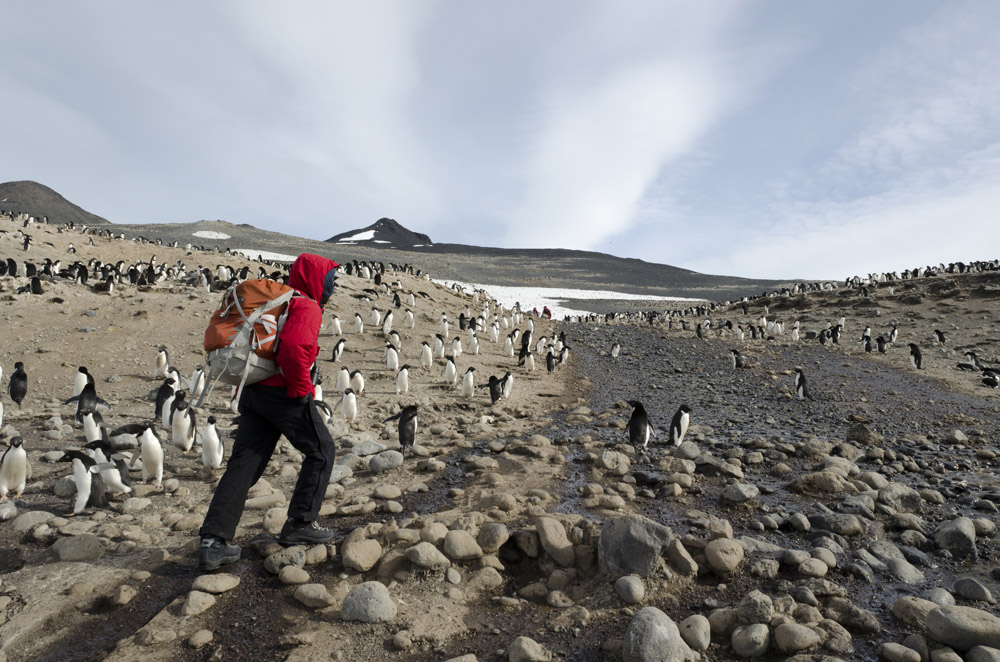|
Power of oneIndividual differences count in one of the world's largest Adélie penguin coloniesPosted March 14, 2014
Cape Crozier is full of life. You can hear it in the cacophonous braying of tens of thousands of Adélie penguins – a range of vocal sounds that imitate an entire farm of overly excited animals. Antarctica’s iconic seabird is so numerous here – spread out across more than two kilometers of coastline and up to a kilometer inland – that the queues of black and white ripple in lines longer than any at the most popular Disney rides. There is also death at Crozier, one of Ross Island’s guano-stained promontories. Predatory skuas swoop low across the innumerable subcolonies, snatching helpless chicks and using their sharp beaks for a not-always-quick kill. Bones litter the beaches. Leopard seals literally prowl right off shore to pounce on the adults swimming back and forth to forage for their young. 
Photo Credit: Peter Rejcek
Scientist Scott Jennings measures the foot of an Adélie chick as part of a project to learn how well its parents are caring for it.
It’s at Cape Crozier and other colonies in the Ross Sea Individuality, even amongst an apparent sea of sameness, counts among penguins. “The more time you spend with them, the more you realize that they do have individual personalities. There are individual differences between them,” explains Scott Jennings Jennings is a master’s student with one of the project’s other co-principal investigators, Katie Dugger 
Photo Credit: Peter Rejcek
Scientist Scott Jennings downloads data from the nearby weigh bridge that records how much Adélie penguin adults weigh before and after foraging trips, a measure of how well they provide for their offspring.
His day at one of the world’s largest Adélie penguin colonies, with more than 200,000 breeding pairs, begins with a hike down from the team’s Spartan field camp. The route includes crossing a long sheet of ice, slick and crunchy under the intense January sun, which has also burnished his face and hands a deep bronze. The first stop is at a large sub-colony encircled by a mesh fence. The only way in and out for the penguins is across the weigh bridge, a scale outfitted with radio-frequency identification technology that reads passive integrated transponder (PIT) tags on the adults. Researchers can learn not only when the adults leave and return to the subcolony, but also how much they weigh upon returning – a measure of how much food a parent is bringing to its chicks. A yellow mountain tent just outside the enclosure, covered in skua poo, houses a 1990s-era laptop that records all the weigh bridge data. “Penguins like to put rocks on [the scale],” muses Jennings as he begins the process to download the last couple of days of data. Later, he’ll handle a few of the chicks to weigh them and measure the size of their beaks, flippers and oversized feet. Part of his research also involves looking at how variations in growth rate figure into the survival equation. “Chicks seem to grow slower here than at the other colonies,” Jennings notes. “There are so many penguins here, there’s more competition for food.” |



For USAP Participants |
For The Public |
For Researchers and EducatorsContact UsU.S. National Science FoundationOffice of Polar Programs Geosciences Directorate 2415 Eisenhower Avenue, Suite W7100 Alexandria, VA 22314 Sign up for the NSF Office of Polar Programs newsletter and events. Feedback Form |


